Atlantic white-sided dolphin
Lagenorhynchus acutus
-
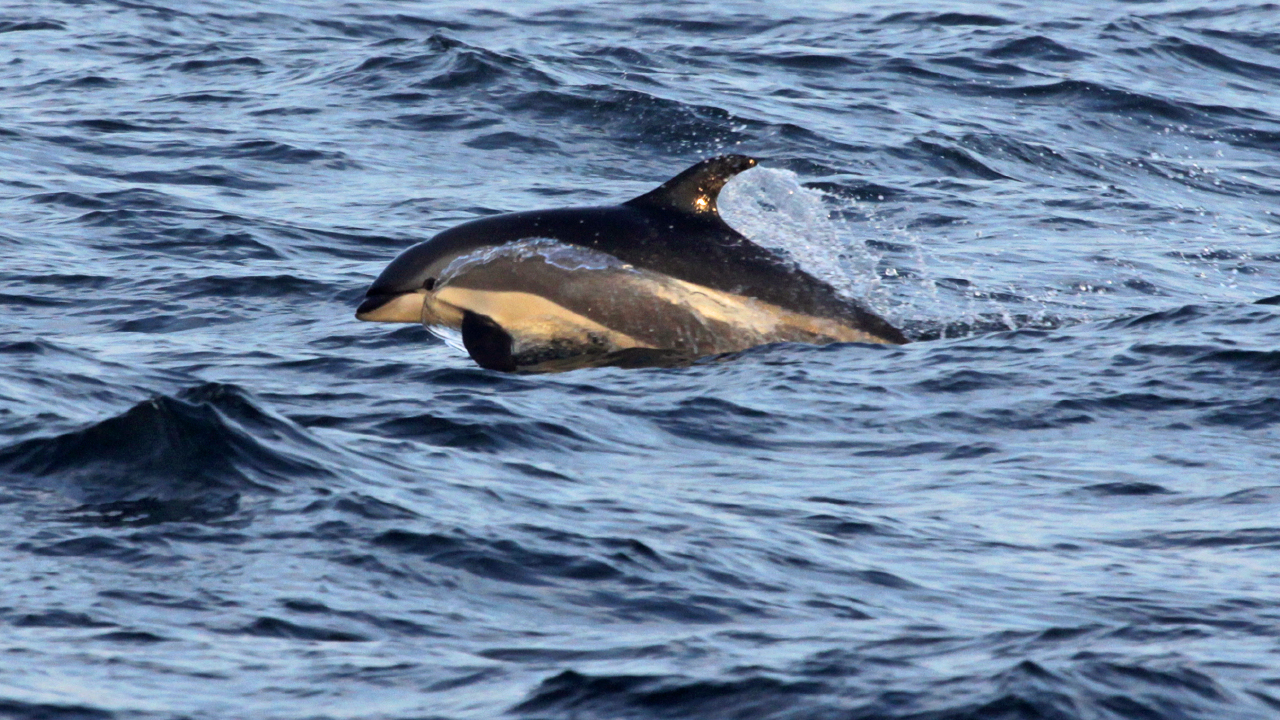 The Atlantic white-sided dolphin is a deep sea species seldom seen within the waters of the continental shelf. Although seldom seen during whale watching trips from Iceland, it is quite common out on the open ocean, off the coast of Iceland where the ocean is extremely deep.
The Atlantic white-sided dolphin is a deep sea species seldom seen within the waters of the continental shelf. Although seldom seen during whale watching trips from Iceland, it is quite common out on the open ocean, off the coast of Iceland where the ocean is extremely deep. -
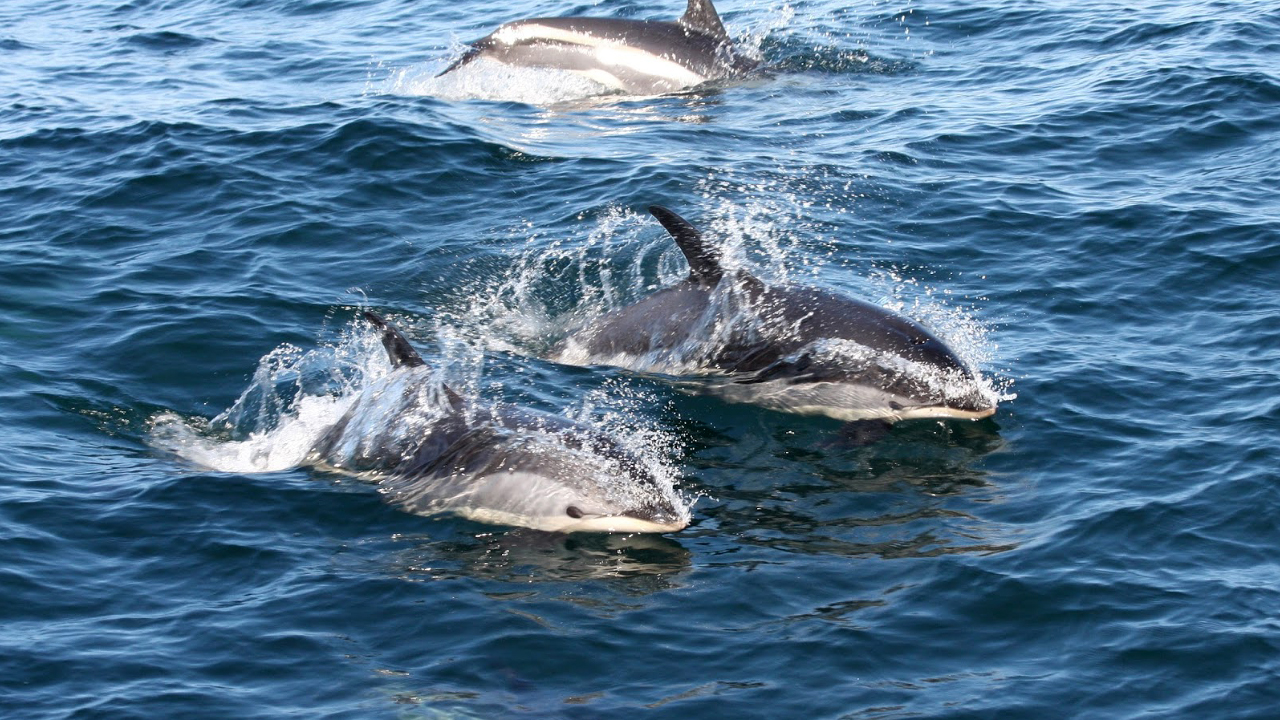 Atlantic white-sided dolphins have a short, dark beak, grey sides, a dark back and white underside. On each side, they have a long white stripe that extends from below their dorsal fin to their tail, and underneath that is a yellowish-tan stripe. Atlantic white-sided dolphins can grow to 2.7 m. Males are generally larger than females. These dolphins weigh from 150 kg to 230 kg.
Atlantic white-sided dolphins have a short, dark beak, grey sides, a dark back and white underside. On each side, they have a long white stripe that extends from below their dorsal fin to their tail, and underneath that is a yellowish-tan stripe. Atlantic white-sided dolphins can grow to 2.7 m. Males are generally larger than females. These dolphins weigh from 150 kg to 230 kg. -
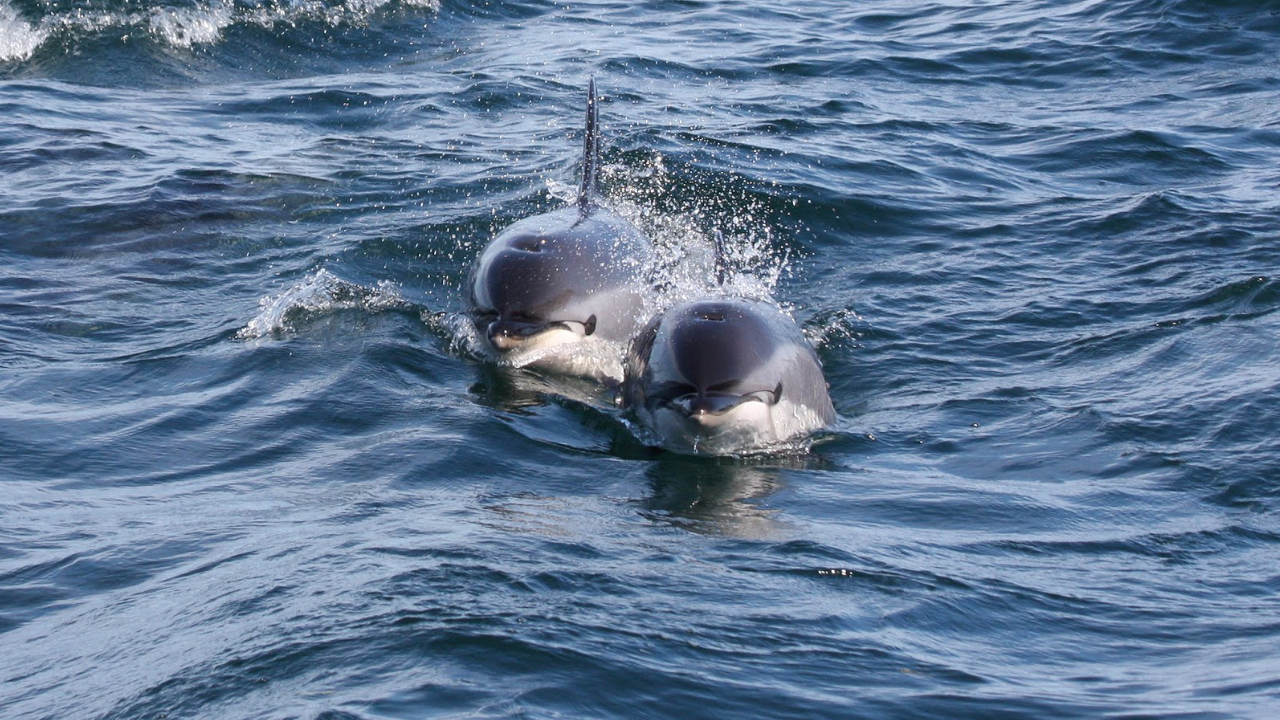 Like other toothed whales, they find their food using echolocation, which involves emitting high frequency pulses of sound. These pulses are amplified when transmitted through an organ in their head, called the melon. These sound waves bounce off objects around them and are received back into the dolphin’s lower jaw, transmitted to the inner ear and interpreted to determine the size, shape, location and distance of the prey.
Like other toothed whales, they find their food using echolocation, which involves emitting high frequency pulses of sound. These pulses are amplified when transmitted through an organ in their head, called the melon. These sound waves bounce off objects around them and are received back into the dolphin’s lower jaw, transmitted to the inner ear and interpreted to determine the size, shape, location and distance of the prey. -
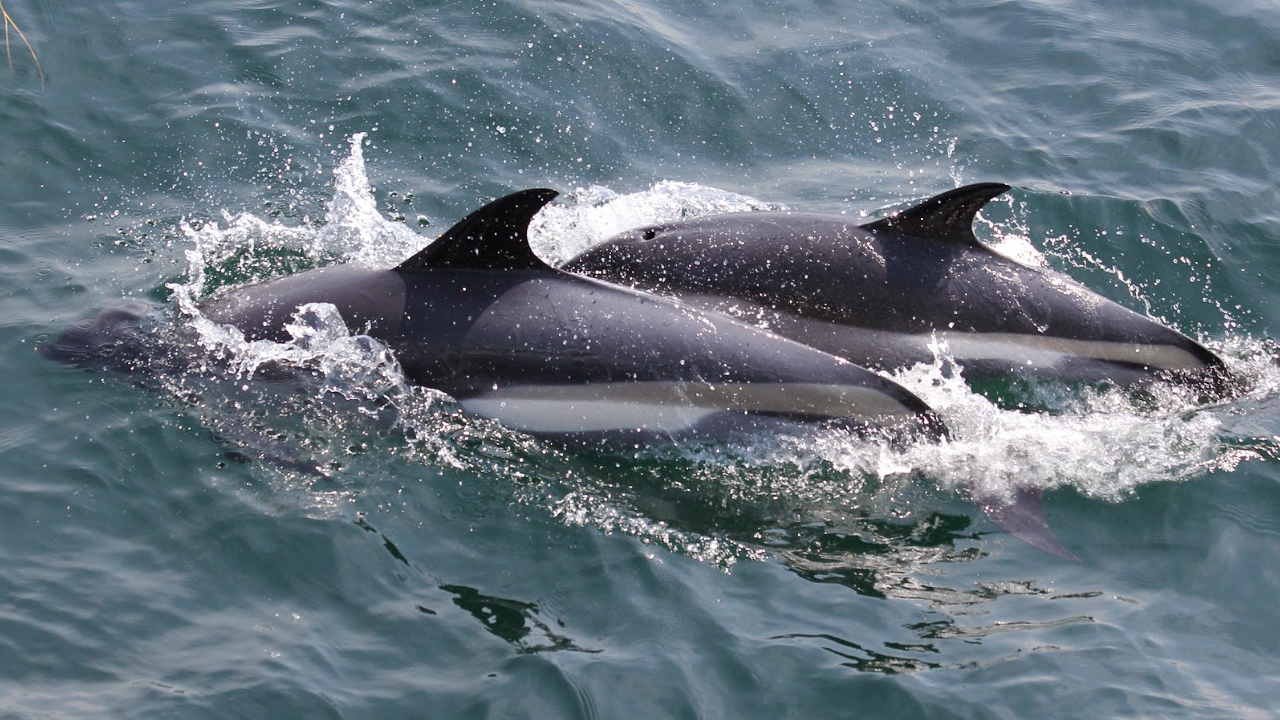 Atlantic white-sided dolphins feed on fish such as herring, mackerel and hake, as well as squid and shrimp. They may split into small groups and work co-operatively when feeding. These feeding groups may be seen with humpback, long-finned pilot and fin whales.
Atlantic white-sided dolphins feed on fish such as herring, mackerel and hake, as well as squid and shrimp. They may split into small groups and work co-operatively when feeding. These feeding groups may be seen with humpback, long-finned pilot and fin whales. -
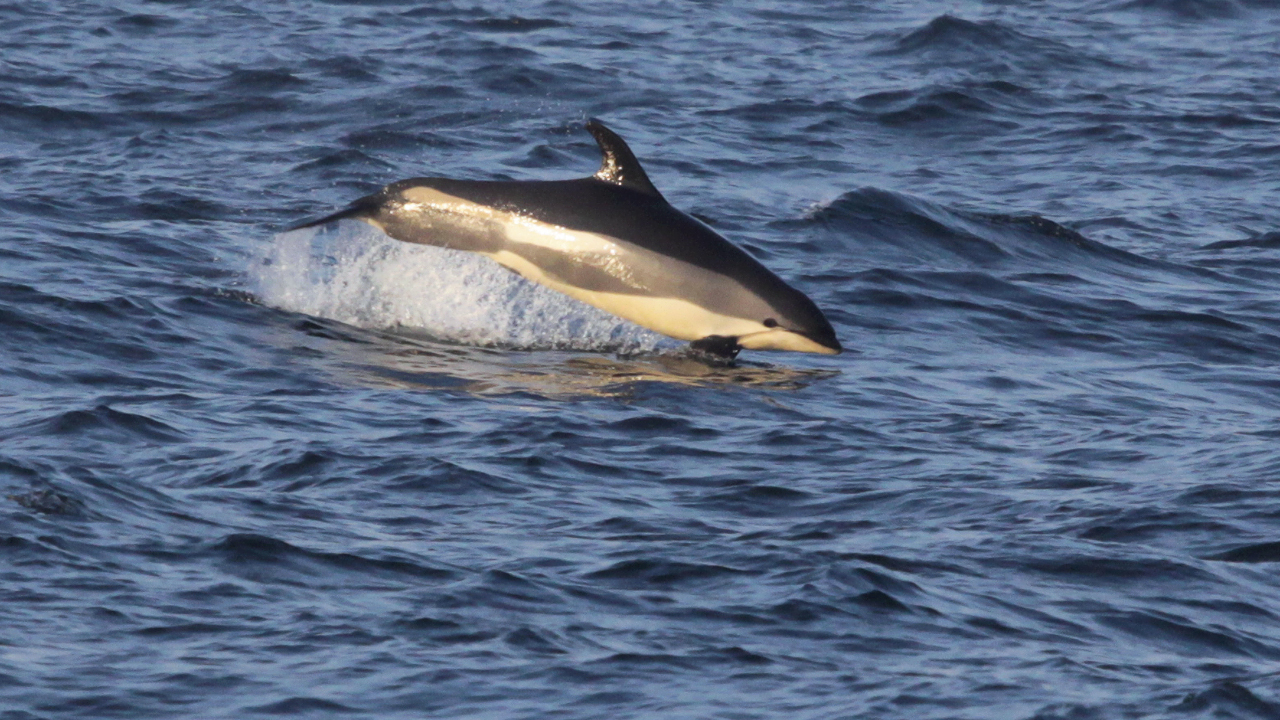 Atlantic white-sided dolphins breed from May to August, with a gestation period of 10–12 months. The calves are 1.3 m long and are most commonly born in June and July.
Atlantic white-sided dolphins breed from May to August, with a gestation period of 10–12 months. The calves are 1.3 m long and are most commonly born in June and July.
